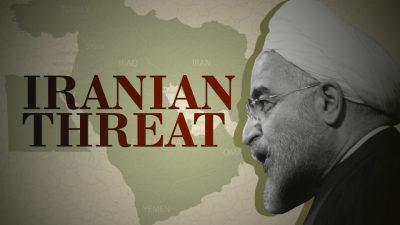Video: US, Saudi Sources Claim Attack on Saudi Oil Was Launched from Iran

On September 16, the Houthis (Ansar Allah) warned of more strikes on Saudi Arabia’s oil infrastructure. Brigadier General Yahya Sare’e advised foreigners to avoid the areas of Bqaiq and Khurais because they could be attacked again. He also said that Houthi forces will expand their operations against Saudi Arabia until the aggression against Yemen is stopped.
In own turn, Saudi Arabia claimed that Iranian weapons were used in aerial strikes over the weekend that interrupted much of the kingdom’s oil production, and that the attacks were not launched from Yemen. Saudi Arabia provided no evidence to confirm these claims. However, they clearly went in the framework of the US approach of directly blaming Iran.
Earlier, speculations appeared that the attacks on targets in eastern Saudi Arabia may have been launched not from Yemen. The first version of this speculations suggested that drones may have been launched by Iran-allied units of Iraq’s Popular Mobilization Units. Nonetheless, on September 16, US Secretary of State Mike Pompeo stressed that Iraq’s “territory was not used to carry out this attack”.
Mainstream media outlets, with help of various ‘anonymous sources’, are now pushing an idea that the strike was delivered by Iran. For instance, ABC News claimed citing “a senior Trump administration official” that “Iran launched nearly a dozen cruise missiles and over 20 drones from its territory”.
The level of tensions came to the level when US President Donald Trump said that the US is “locked and loaded” to respond with a force, waiting for verification of who was responsible and for word from Saudi Arabia on how to proceed.
The Trump administration has previously blamed Iran for the actions of the Houthis. However, so far, satellite images of the strike impact have been the only evidence that the US has released. This barely can serve as a confirmation of the Iranian involvement.
In this light, it would be interesting to look at this situation from another direction. Saudi Arabia currently has very complicated relations with the UAE and Qatar, located much closer to Buqayq and Khurais than Iran or any position of Iranian-backed forces. Furthermore, tensions between the UAE and Saudi Arabia grew to the level when UAE-backed and Saudi-backed forces openly clash in southern Yemen. The Qatari-Saudi relations have also been in a deep crisis since 2017. Therefore, these states have a direct interest in assisting to such a strike or, if we believe in the version that the Houthis were not involved, even delivering it by themselves.
*
Note to readers: please click the share buttons above or below. Forward this article to your email lists. Crosspost on your blog site, internet forums. etc.
Support South Front in its endeavors.
If you’re able, and if you like our content and approach, please support the project. Our work wouldn’t be possible without your help: PayPal: [email protected] or via: http://southfront.org/donate/ or via: https://www.patreon.com/southfront


